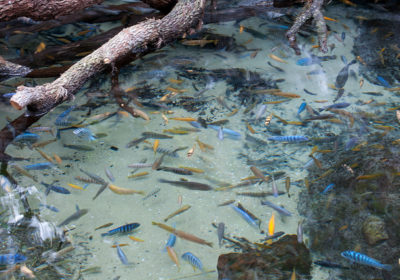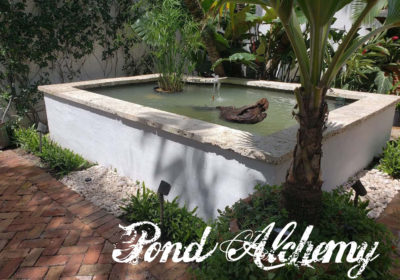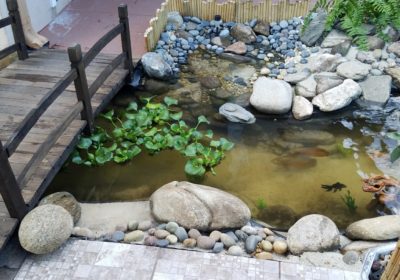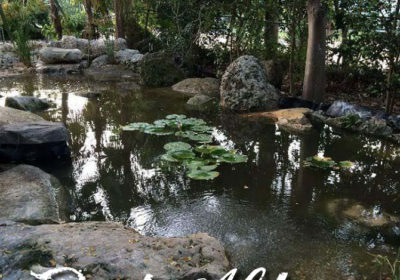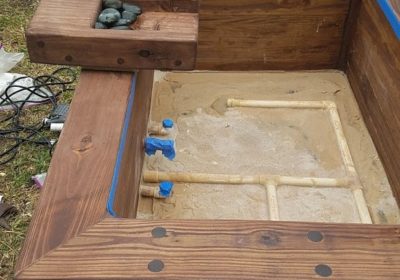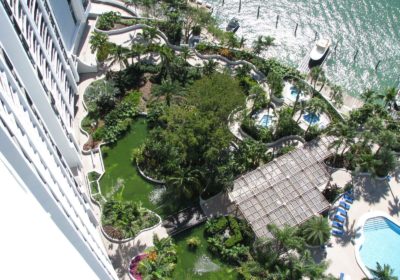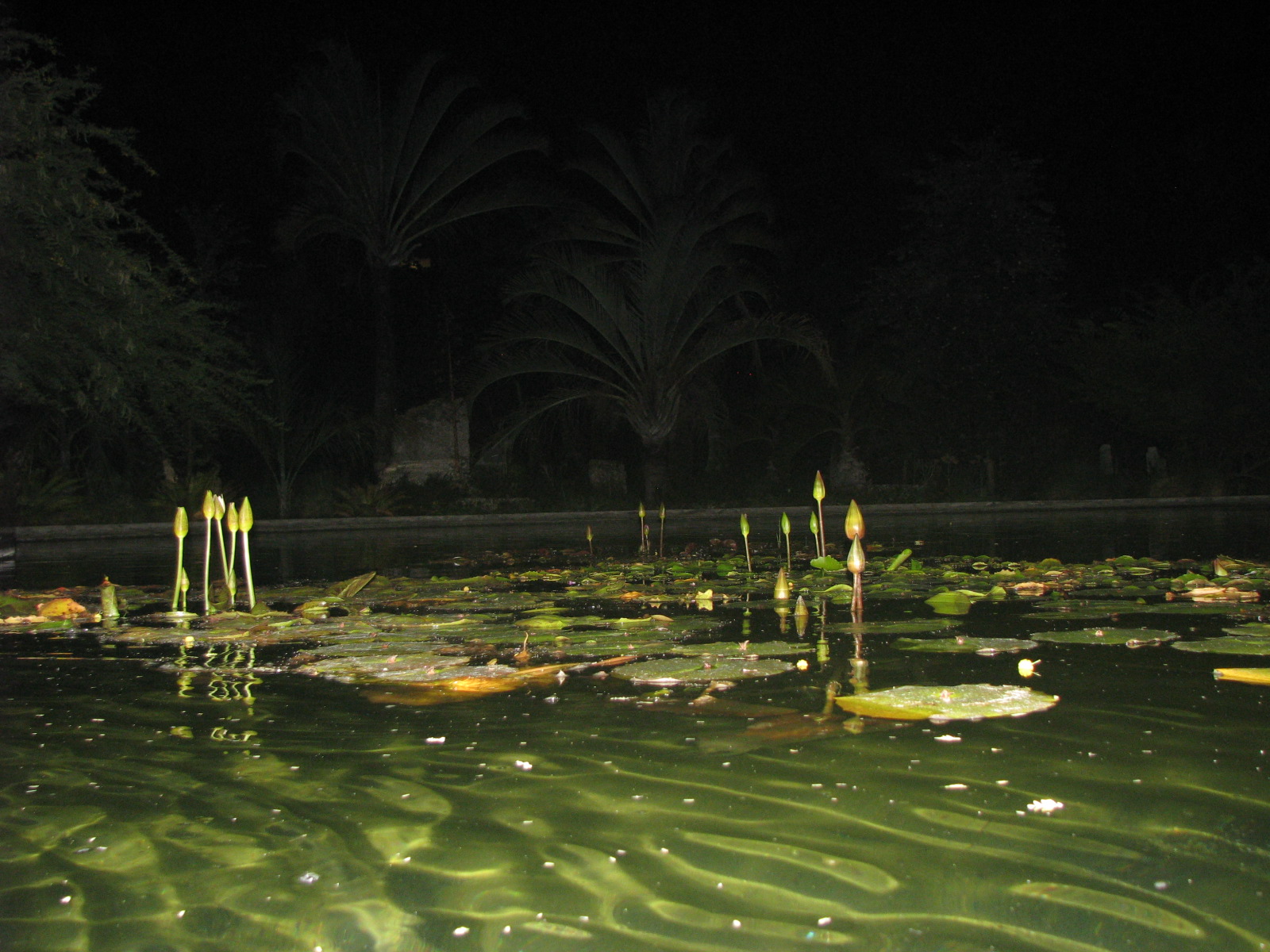
PONDOLOGY
- Stats: 1562 1
- Posted: September 3, 2017
- Author: pondalchemy
- Category: POND DESIGN, POND ECOSYSTEM, POND FISH, POND PLANTS, Uncategorized
Pond Alchemy’s Pond Terminology
Aeration– (also called aerification) is the process by which air is circulated through, mixed with or dissolved in a liquid or substance. Examples: Waterfalls, Spitters, Fountains and Air Pumps.
Algae Eaters– animals that feed on pond algae. Plecos, Cichlids and Snails help maintain a healthy balance of beneficial algae.
Algaecide– An algaecide or algicide is a biocide used for killing and preventing the growth of algae.
Air Pump– Increases air flow through air stones.
Air Stones– diffuses air in water to increase aeration.
Ammonia– chemical produced primarily from fish waste. High levels are lethal to pond life.
Anaerobic Bacteria– Bacteria types that does not require oxygen for growth. It may react negatively or even die if oxygen is present. (In contrast, an aerobic organism (aerobe) is an organism that can survive and grow in an oxygenated environment.)
Algae– an informal term for a large, diverse group of photosynthetic organisms. Plant like organism that thrive in low oxygen level water. Certain types are beneficial in a pond ecosystem but can overtake an unbalanced pond.
Beneficial Bacteria– a healthy pond contains several beneficial bacteria that “consume ammonia, nitrates, phosphates and nitrogen. Some heterotrophic types actually consume small particles of organic materials. Critical for a balanced nitrogen cycle. The bases behind biological filtration systems and critical for a healthy pond ecosystem.
Border Plants– vegetation planted in normal soil surrounding ponds. The right plants can provide shade and minimize organic debris or run-off entering pond. Poorly selected plants can contribute to increased organic load, and in some cases are toxic to fish.
Bio-Filter– a filtration system that relies primarily on bacteria to remove fish waste.
Bio-Pod– Pond Alchemy’s inline bio-filter.
Biological Filtration– a filtration system that relies primarily on bacteria to remove fish waste.
Carbon Filtration– a filtration system that relies primarily on activated carbon to remove fish waste. Also used to remove water treatments and chlorine.
Check Valve– an inline valve that prevents external pond pumps from losing prime.
Cichlids– /ˈsɪklɪdz/ are fish from the family Cichlidae in the order Perciformes. Cichlids are members of a suborder known as Labroidei, along with the wrasses (Labridae), damselfishes (Pomacentridae), and surfperches (Embiotocidae).[1] This family is both large and diverse. At least 1,650 species have been scientifically described,[2] making it one of the largest vertebrate families. New species are discovered annually, and many species remain undescribed. The actual number of species is therefore unknown, with estimates varying between 2,000 and 3,000.[3] Cichlids are popular freshwater fish kept in the home aquarium and ponds. Pond Alchemy specializes in African Cichlids.
Dead Zones– used to describe areas with poor water circulation.
Detritus– small particles of organic material that can cloud ponds. Examples: partially digested leaves, fish food, toad waste.
External Pump– pump located outside of pond. Similar to pool pumps.
Flow– used to describe water and/or air circulation.
Heterotrophic Bacteria– heterotroph (/ˈhɛtərəˌtroʊf, -ˌtrɒf/;[1] Ancient Greek ἕτερος héteros = “other” plus trophe = “nutrition”) is an organism that ingests or absorbs organic carbon (rather than fix carbon from inorganic sources such as carbon dioxide) in order to be able to produce energy and synthesize compounds to maintain its life.[2][3] Ninety-five percent or more of all types of living organisms are heterotrophic, including all animals and fungi and some bacteria and protists.[4] Beneficial heterotrophic bacteria are useful as water column clarifiers an important part of a healthy pond ecosystem.
Intake– location/s where pump “sucks” or intakes water.
Jets– water returning from pump under pressure.
Koi– (鯉, English: /ˈkɔɪ/, Japanese: [koꜜi]) or more specifically nishikigoi (錦鯉, [ɲiɕi̥kiꜜɡoi], literally “brocaded carp”), are colored form of Amur carp (Cyprinus rubrofuscus) that are kept for decorative purposes in outdoor koi ponds or water gardens. Koi is an informal group of the colored variants of the Amur carp. Japanese people are the ones who classify this. Koi varieties are distinguished by coloration, patterning, and scalation. Some of the major colors are white, black, red, yellow, blue, and cream. The most popular category of koi is the Gosanke, which is made up of the Kohaku, Taisho Sanshoku, and Showa Sanshoku varieties.
Liner– waterproof membrane used to construct ponds.
Media– material used in pond filters.
Multi-Media Filter– combines different filter materials and mechanisms in one filtration unit.
Mechanical Filtration– a filtration system that relies primarily mechanical or physical mechanisms to remove fish waste and particulates. Examples: Filter pads and settling tanks.
Marginal Plants– planted in wet soil zones of a pond.
Nitrites– occurs from bacteria metabolizing ammonia. Part on The Nitrogen Cycle.
Nitrates– occurs from bacteria metabolizing nitrites. Part on The Nitrogen Cycle.
Nitrogen– occurs from bacteria metabolizing nitrates. Part on The Nitrogen Cycle.
Nitrogen Cycle– Several types of bacteria are essential for the conversion of ammonia (fish waste into atmospheric nitrogen. The nitrogen cycle is the biogeochemical cycle by which ammonia is converted into various chemical forms as it circulates among aquatic ecosystems. The conversion of nitrogen can be carried out through both biological and physical processes. Important processes in the nitrogen cycle include fixation, ammonification, nitrification, and denitrification.
Oxygen Levels– the amount of available oxygen in water.
Oxygen Saturation– the maximum amount of available oxygen in water. Temperature dependant.
Pond Fish– species of fish well suited to pond environments.
Plecos– short for Plecostomus. Plecos are well-known algae eaters that originated in the rivers of the Amazon jungle in South America. Plecos attach themselves to hard surfaces with specially adapted mouth parts and graze on “carpet algae”. Critical for algae control in warmer environments.
Probiotics– term used to describe beneficial pond bacteria.
Phosphates– In organic chemistry, a phosphate, or organophosphate, is an ester of phosphoric acid. Of the various phosphoric acids and phosphates, organic phosphates are important in biochemistry and biogeochemistry (ecology), and inorganic phosphates are mined to obtain phosphorus for use in agriculture and industry. In pond ecosystems phosphates are introduced by fish food, run-off and by adding water. In some area the natural water is high in phosphate and nitrogen. Both are primary ingredients in fertilizers. While an important part of the nutrient cycle, high phosphate levels can contribute to algae problems. Pond Alchemy “controls” phosphates with bacteria, plants and phosphate binders.
PH– scale used to measure the acidity or alkalinity of water.
Phytoplankton– single celled “algae” or “algae like” organisms that is the primary cause of “green water”
Run-off – drainage into pond.
Salinity– The amount of salt present in water.
Sludge– the build up of organic debris on pond bottom.
Submersible Pump– pump that is in the pond water.
Skimmer– Intake at surface area designed to capture floating debris.
UV Light Filtration– inline filtration system utilizing ultra-violet light to control phytoplankton and micro-organisms.

Copyright Pond Alchemy 2016. All rights reserved.


